AWStats is a powerful tool that creates graphical reports from your website’s access logs. It’s great for taking a quick look at things such as visits to your site per day and the number of pages viewed on your website.
In this guide I’ll go through each section of an AWStats report and explain some important things to keep an eye out for when trying to understand your logs.
- Awstats Terms
- Summary
- Monthly History
- Days of the Month
- Days of Week
- Hours
- Countries
- Hosts
- Robots/Spiders
- File Type
- Pages-URL
- Operating-Systems
- Browsers
- HTTP Status Codes
Awstats Terms
Here are some of the common terms that you’ll run across when viewing your Awstats reports:
- Unique Visitors: The unique amount of visitors you’ve had to your website.
- Number of Visits: The number of visits to your website made by all unique visitors.
- Pages: The number of full pages that have been viewed.
- Hits: The total number of hits for resources such as images or JavaScript files.
- Bandwidth: The total amount of bandwidth consumed serving all of the website requests.
Summary
The Awstats summary view gives you a nice overview of the current report period, in this case Apr 2014.

Monthly History
The Awstats monthly history report gives you a look at how your traffic is trending on a monthly basis.

Days of Month
The Awstats days of month report lets you easily see what days during a month are your site’s busiest.
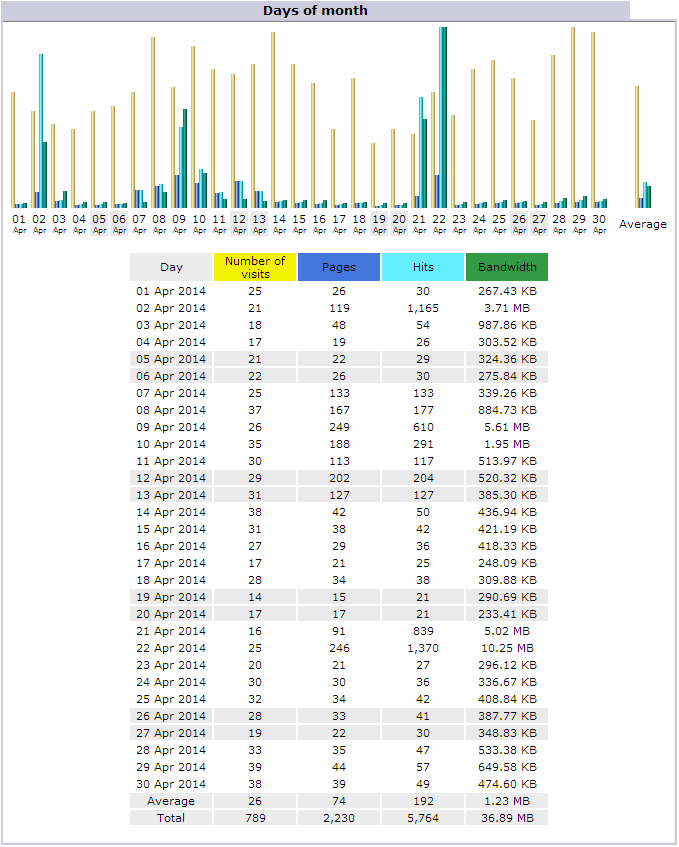
Days of Week
The Awstats days of week report shows which days of the week bring the most traffic to your site.
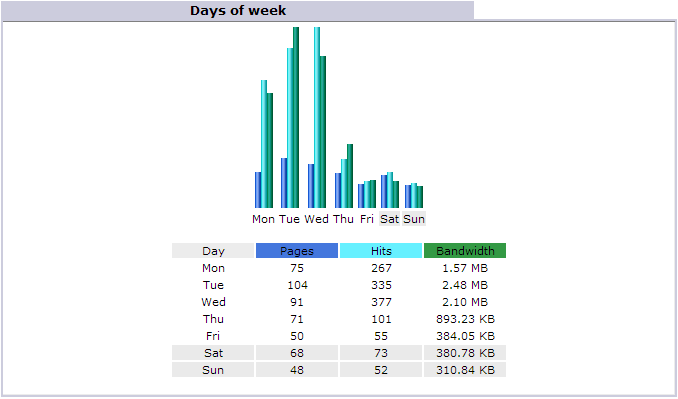
Hours
The Awstats hours report gives you a nice view of which hours during the day your site gets the most hits.
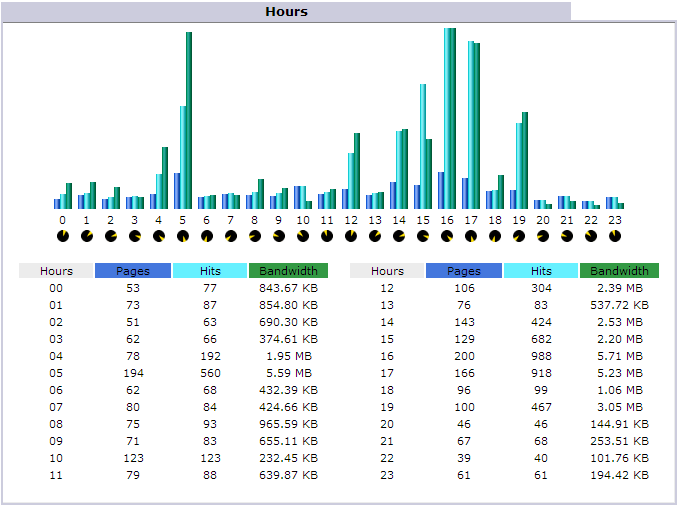
Countries
The Awstats countries report lets you see what region of the world your visitors are coming from.
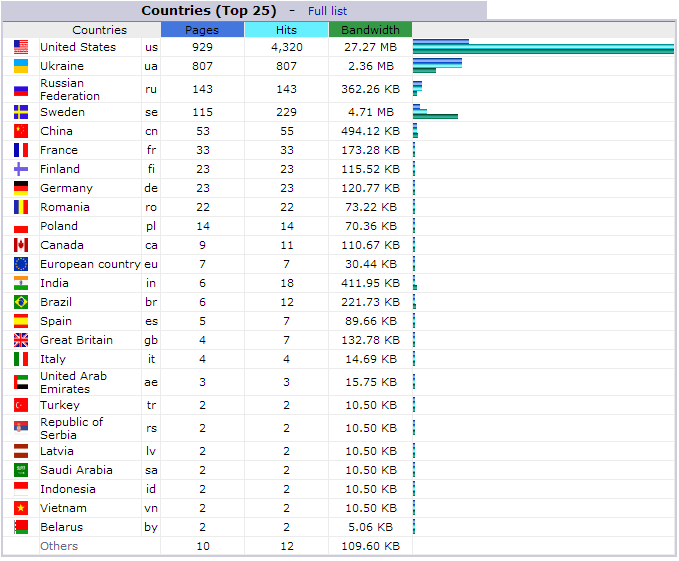
Hosts
The Awstats hosts report shows the top IP addresses that have been visiting your website. If you notice any that have a far higher number of requests than others, you might want to think about blocking unwanted users from your site using .htaccess.
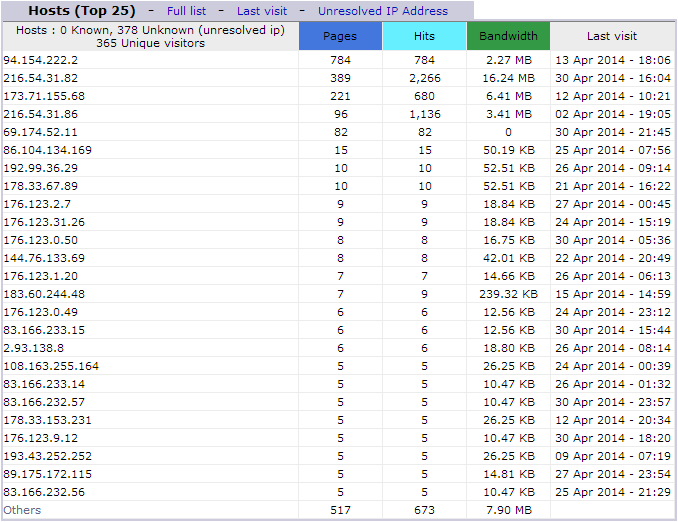
Robots / Spiders
The Awstats robots / spiders report shows non-human visits from search engines and other automated sources. If you notice higher than normal CPU usage, consider temporarily blocking bad bots or stopping search engines from crawling your website.

File Type
The Awstats file type report allows you to easily see what type of files are requested the most often.
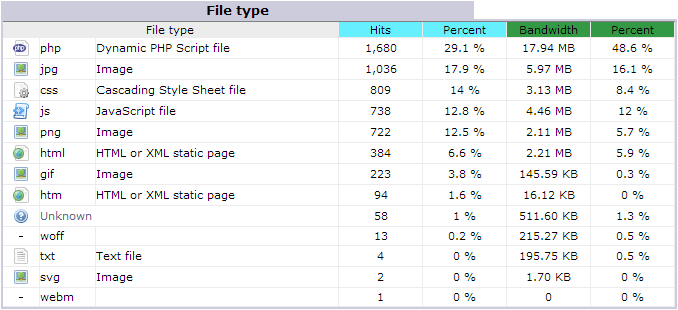
Pages-URL
The Awstats pages URL report lets you easily see what pages are being requested the most.
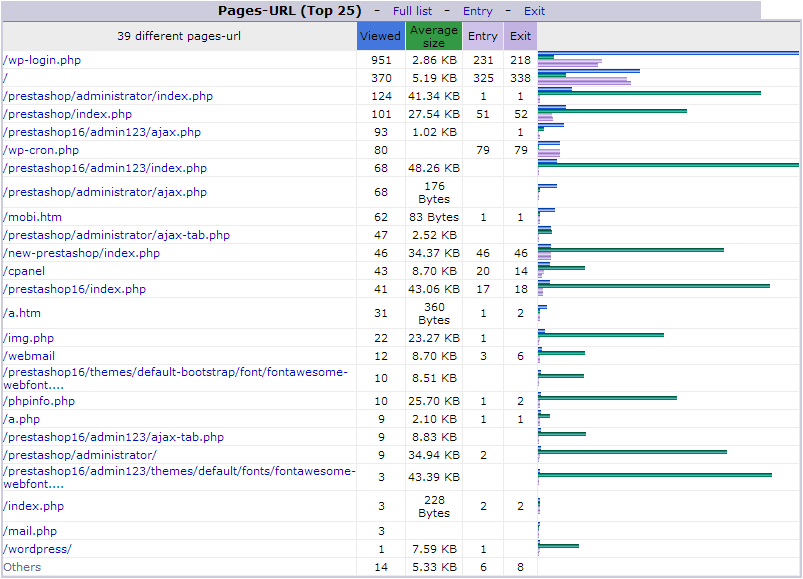
Operating-Systems
This report lets you see what operating systems your visitors are using.

Browsers
The Awstats browsers report allows you to see what web browsers your site is being viewed with.

HTTP status codes
The Awstats HTTP status codes report lets examine unusual HTTP responses that your website is giving.

You should notice that the 404 status is a link you can click on:
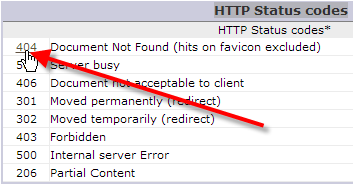
You can see that there were over 700 404 errors from bots trying to hit this website’s wp-login.php script.
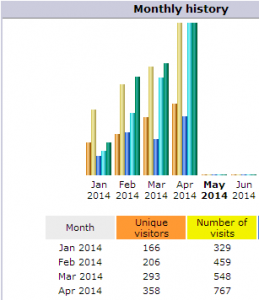
Thank you so much! 🙂
Is there a way to anonymize IP addresses and other PII in AwStats (I have a reseller at InMotion and I’m from EU)? I couldn’t find where to configure AWstats to make it compliant or disable it entirely. Thanks 🙂
While IP addresses may be considered personal data, server administrators are permitted to log IP addresses for security reasons according GDPR regulations, since server integrity is considered a legitimate reason to collect this kind of data. You may want to consider adding this information to your site’s privacy policy. (This is not legal advice, so you should contact a security consultant and/or legal representative if you want make sure your site is fully compliant.)
The latest AWSTATS version also constains statistics for downloads. It starts with the top ten, but the “full list” is also available. Following the pdf file name, there are 4 columns. The first and second column concern “hits”. The 3rd column is “bandwidth” and the 4th “average size”.
I don’t understand the operational difference between the two columns of “hits” and I am not sure how AWSTATS arrives at the “average size”. I tried dividing the BW by the first “hits” column. Sometimes this agrees with the “averge size” column, other times not. I also divided the BW by the sum of the two “hits” columns. Again, my result does not equal the “average size” column.
I also do not understand, how AWSTATS arrives at the top 10, when the first “hits” column does not agree with the “Bandwidth” and the “Average size” columns, in terms of rank of values? Given the disagreement, which index is the most reliable in terms of popularity?
Can you please help me?
Thank you very much.
Nicholas P. Petropoulos,
Sociologist, Ph.D.
Hello Nicholas,
Sorry for the problems with understanding the AWStats. Please review the definitions for the stats that are generated by reading through this article or through their direct documentation. Having a better understanding of how the stats are generated should help answer your questions.